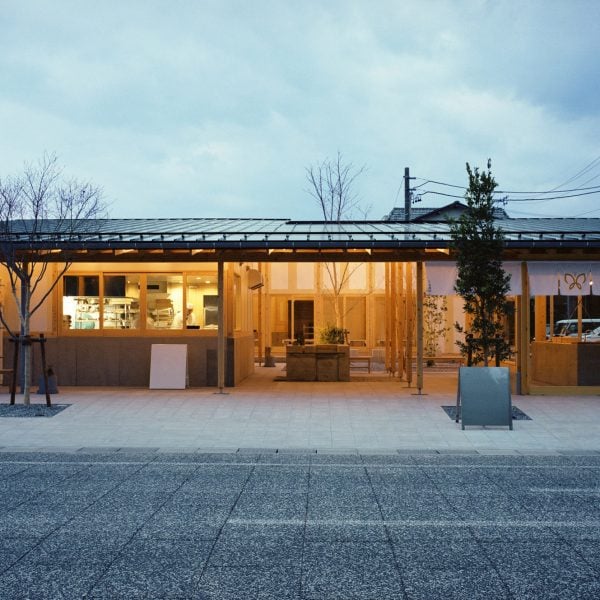Timber pillars and PVC pipes had been left naked to blur the boundaries between the inside and exterior of cafe and candy store in Funamachi, Japan, designed by Schemata Architects.
Named Funamachi Base, the mixed candy retailer and cafe is situated subsequent to a park within the centre of Funamachi, a riverport city in central Japan.
This location impressed the design of its three buildings, which home a restaurant, sweetshop and a structurewith an workplace, kitchen and workshop.
“We envisioned the power as an extension of the park, together with the courtyard linked through flowerpots, in order that the boundary between the within and out of doors of the positioning would disappear and one can be regularly drawn inside,” the studio stated.
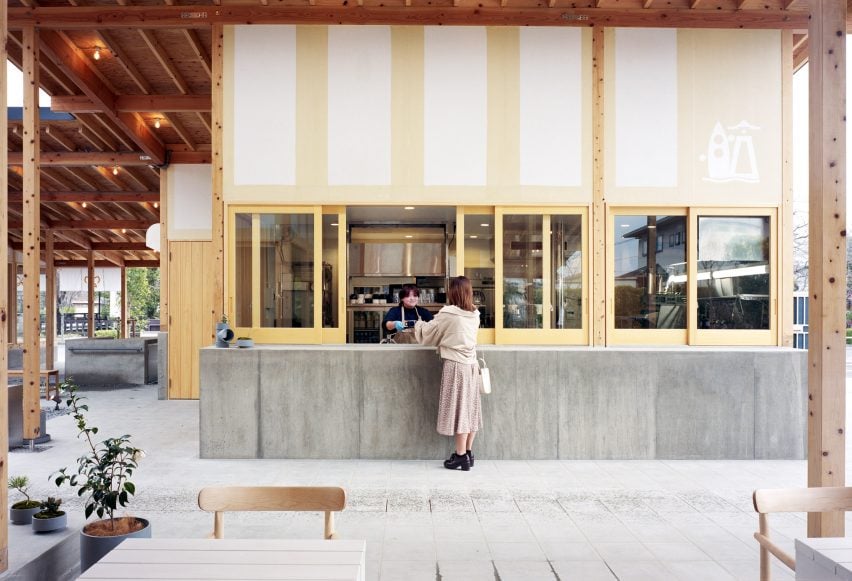
Schemata Architects‘ founder Jo Nagasaka advised Dezeen that the intention was additionally for folks to wander into the area as they stroll alongside the river.
“The primary thought was to include the greenway alongside the river into the power,” he stated. “The design relies on the expectation that folks will discover themselves coming into into the store as they stroll alongside.”
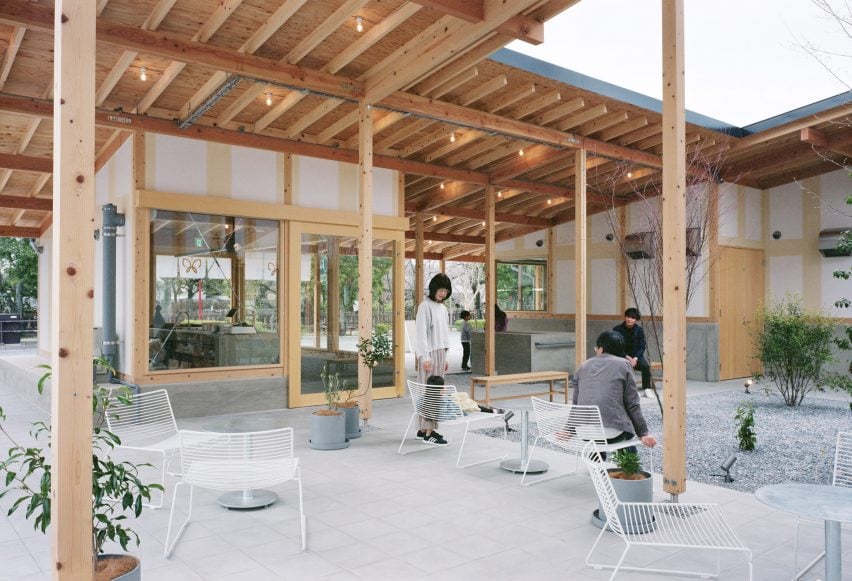
Vast roofs prolong out from the buildings of the 326-square-metre Funamachi Base, creating sheltered areas the place guests can sit and benefit from the cafe’s bean buns.
“The gap between every constructing is taken and a roof is positioned between them to create a semi-outdoor area, however to keep away from clear boundaries between the within and out of doors, the concept was to apply the identical supplies inside and outside,” Nagasaka stated.
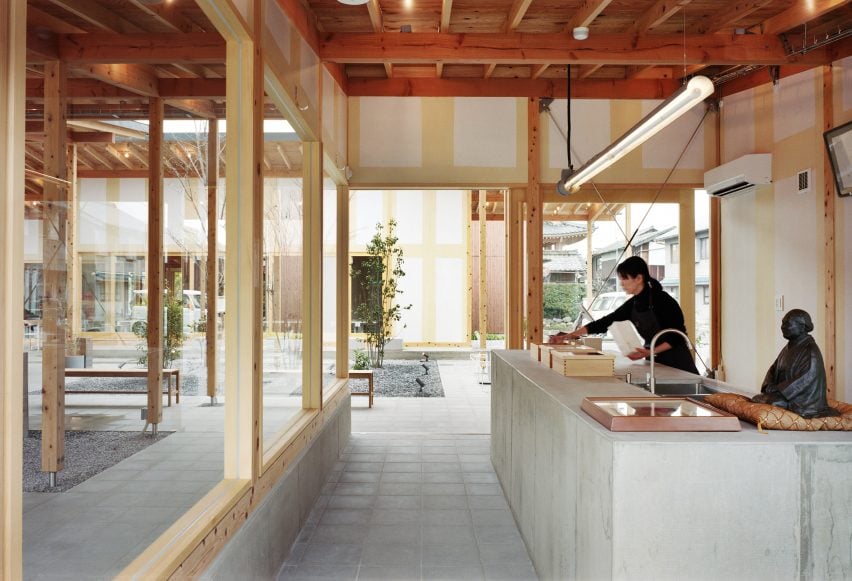
Constructed from concrete and Douglas fir wooden, Funamachi Base additionally options apparent PVC pipes, a design selection that Schemata Architects made to underline the interplay between the inside and the outside.
“The identical supplies had been used inside and out of doors: calcium silicate board and putty coating, PVC pipes usually used for out of doors gutters had been sandblasted and positioned throughout the within and out of doors of the constructing, and the eaves prolonged to create an area the place the within and out of doors are interchangeable,” the studio stated.
The muse of the constructing was designed to bulge out, forming a counter from which to promote the sweets.
It was additionally used to create a bench for guests to relaxation on and a properly, as water is required to create Japanese sweets.
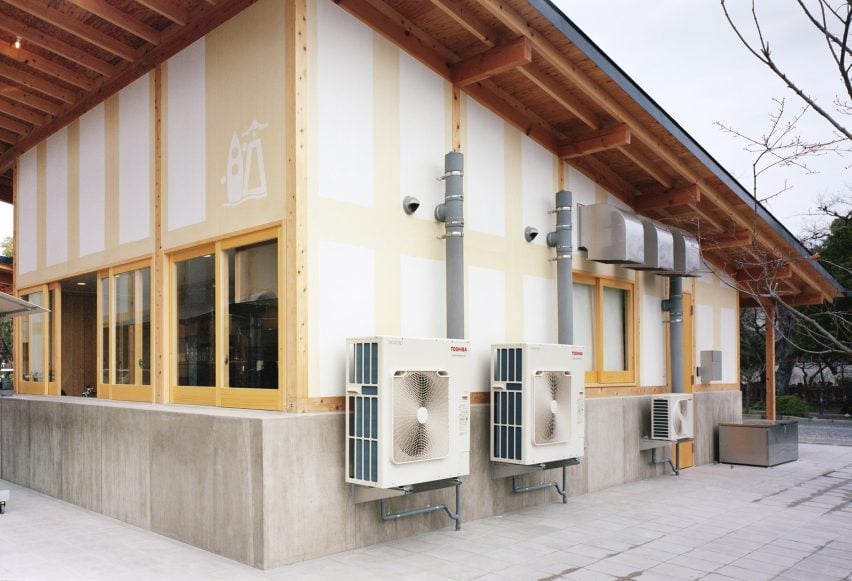
The facades of the buildings have a light-brown sample, including to their industrial really feel.
“White partitions would make it seem like a stylised Japanese constructing, so we dared to deviate from that,” Nagasaka defined. “We’ve got chosen this in order that the development course of is decreased and the end is uncommon.”
Schemata Architects just lately designed the Komaeyu bathhouse in Tokyo, which was shortlisted for a Dezeen Award 2024 within the interiors class.
Mission credit:
Architect: Jo Nagasaka / Schemata Architects
Mission crew: Yuko Yamashita
Building: Giken
Collaboration: Monochrome (photo voltaic panel built-in roof), Fukushima Galilei (kitchen)


